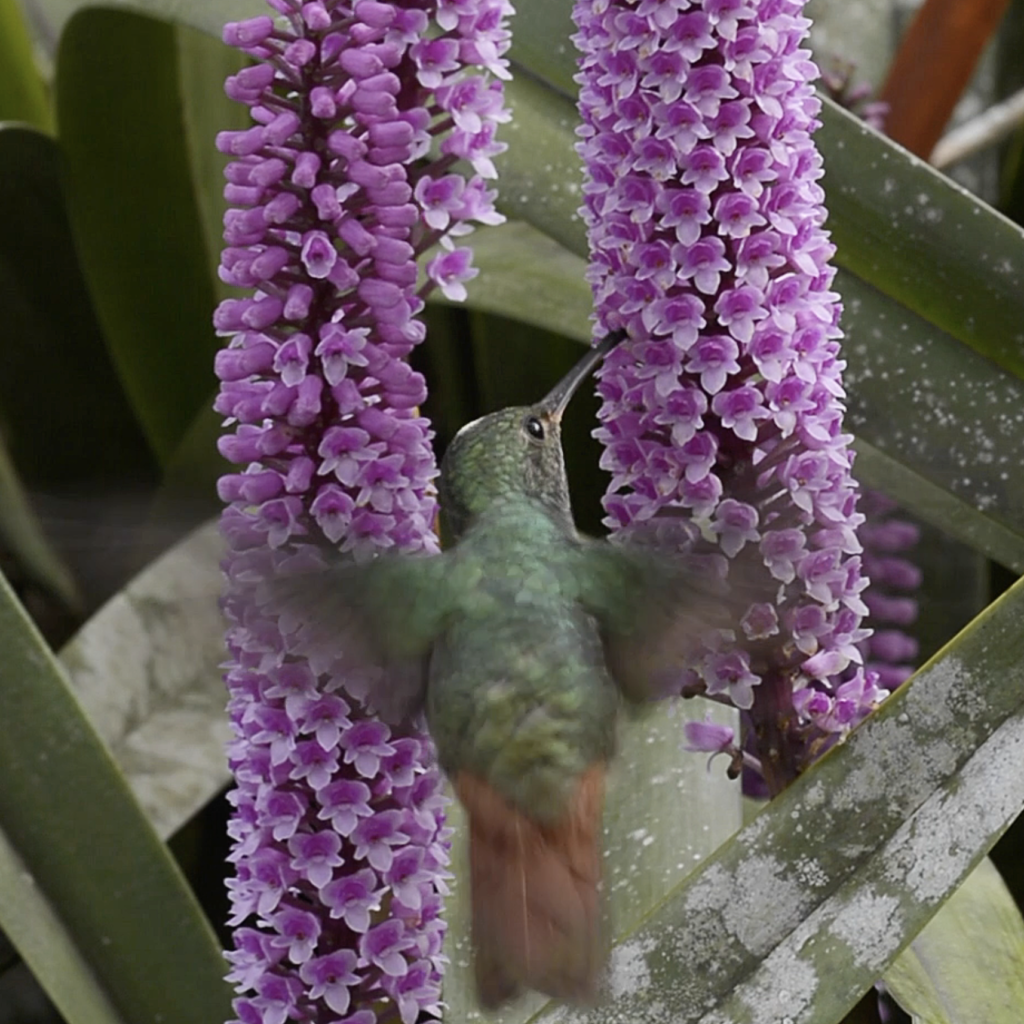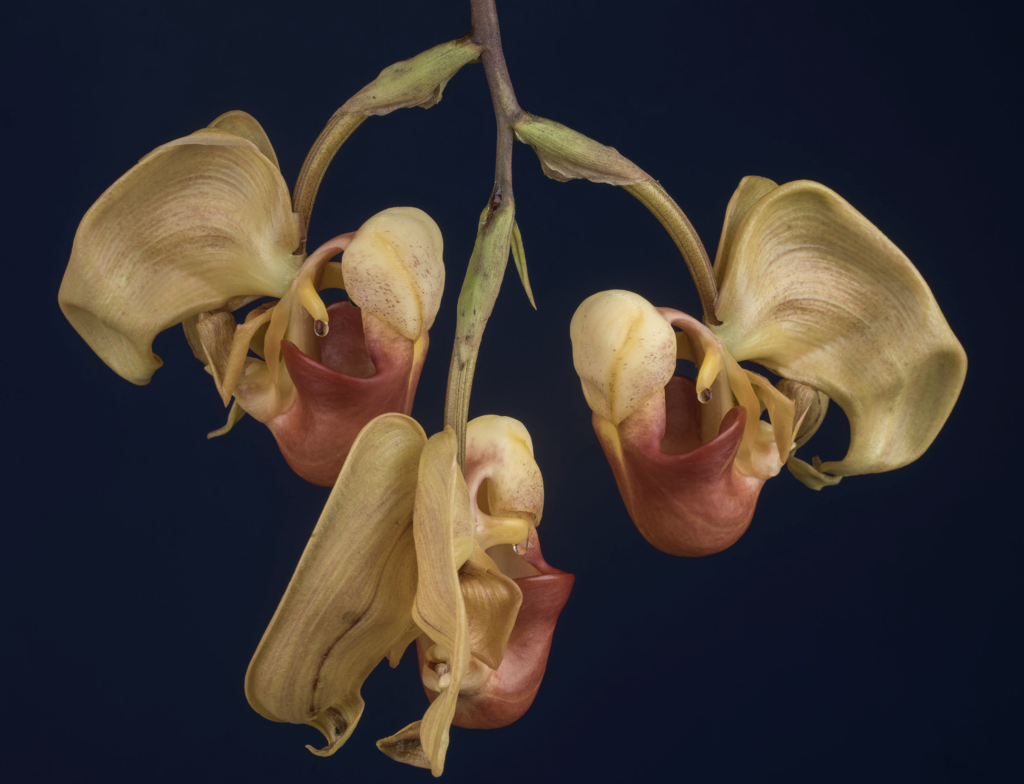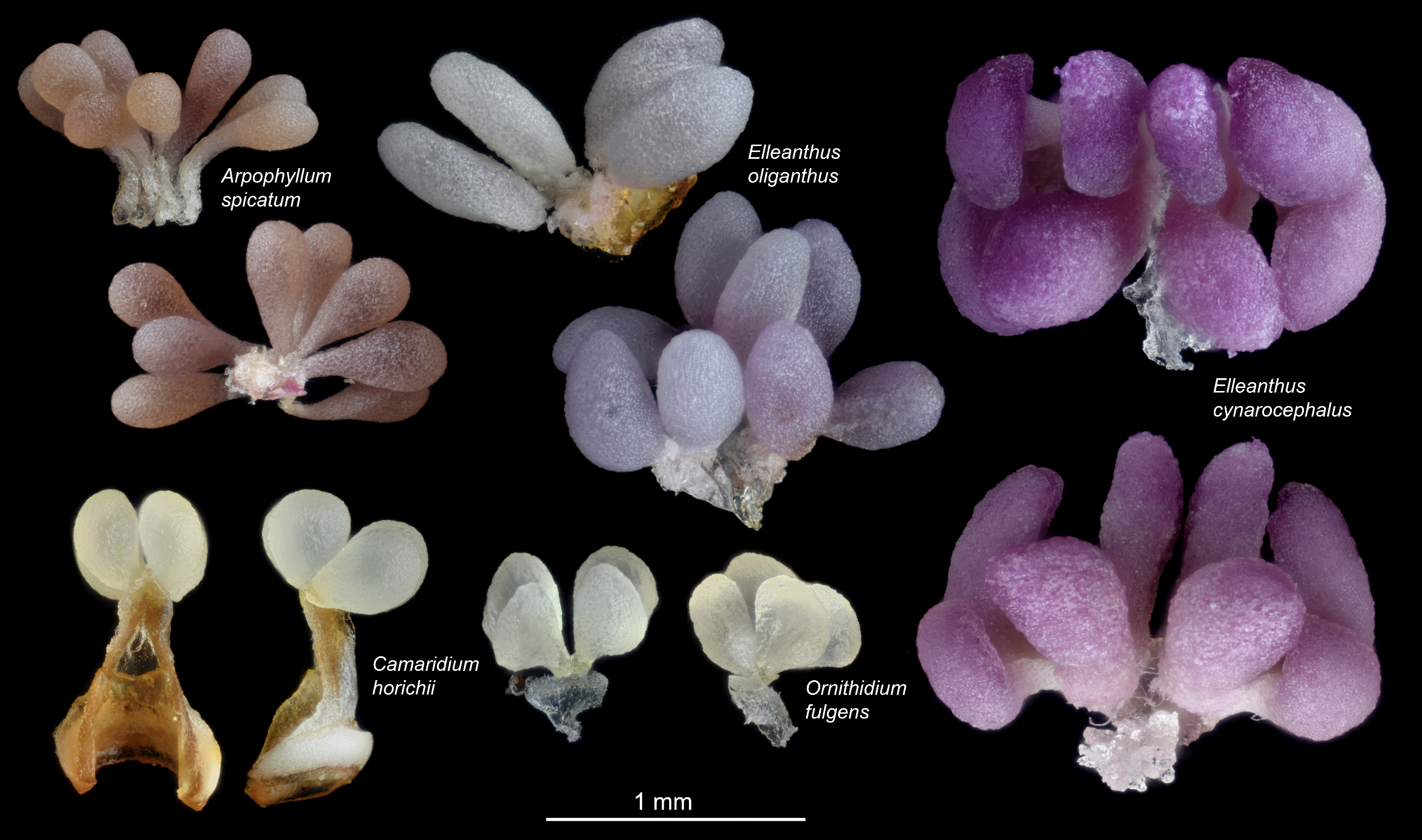
Ecological studies require a great deal of field observations and information on the ecology of many tropical orchids is still highly fractionary. From the study of chemically mediated animal behavior to floral adaptation and organ transformation, it is an area with great research opportunities. One of the most fascinating pollination strategies among Neotropical orchids are those involving the brightly colored male Euglossine bees that remove and deposit orchid pollinaria while collecting floral fragrances which they use in courtship.
There is a component of mystery to studying the interactions between orchids and animals. Ecological interactions were long considered to be merely an intellectual curiosity rather than an academic priority. The astonishing complexity of the schemes used by orchid flowers to ensure fertilization were initially placed under the spotlight by Charles Darwin when he published On the various contrivances by which British and foreign orchids are fertilised by insects in 1862. Since then the extraordinary means by which orchids manage to fertilize and reproduce have been a matter of growing scientific interest.

Such is the case of the odd bucket orchid, which entices the bee with a sweet smell, makes it drop into the bucket and forces it out of the lip through a narrow channel.

Another wonderful example of orchid flowers adapting to their pollinators are those pollinated by hummingbirds. The orchid flowers that these quick and graceful flyers pollinate are typically brightly colored, compact and full of sweet nectar. Robert Dressler had noted that the pollen masses of many of these orchids are dull grey rather than bright yellow, and suspected this was an adaptation to reduce the visual contrast with the bird’s beak. No one has put this hypothesis to the test, but the pollen masses of hummingbird pollinated orchids are indeed dull colored, albeit not all grey.